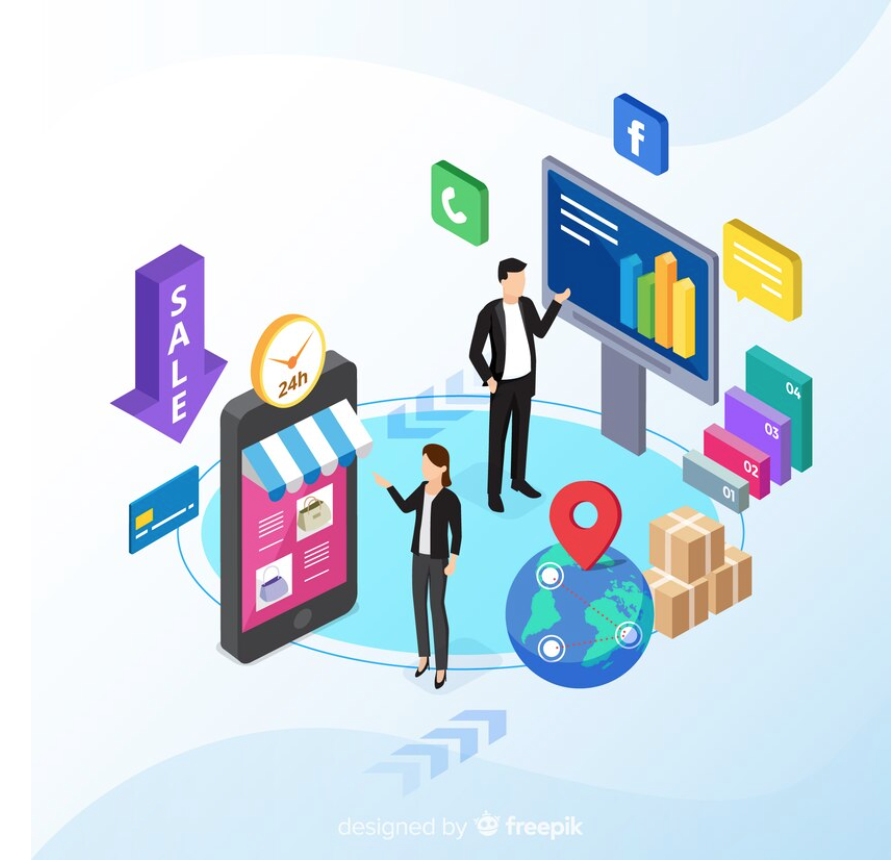Introduction
Digital transformation refers to the incorporation of digital technologies like artificial intelligence, machine learning, Internet of Things (IoT), cloud computing, and data analytics, in a company’s business operations to bring about efficiency and drive growth.
It brings with it new opportunities. Companies can quickly enter the marketplace and cause disruptions that others struggle to keep up with. It enhances customer experience, optimizes internal processes, increases efficiency and productivity, develops new services and products and creates better strategies for growth.
Benefits
Improves Efficiency: Automation and computerized operations are faster and error-free. They improve efficiency and allow employees to concentrate on more difficult tasks.
Enhances Innovation: Digital technologies open up new areas for innovation through data collection, advanced analytics, and automating tasks. One is able to free-up and capitalize on one’s creativity and genius
Improved Decision Making: Using advanced analytical tools like big data analytics and predictive analytics, hidden patterns and trends can be uncovered, which opens up the possibilities for more valuable strategic decisions
Better Security: AI and ML are able to identify risks and take proactive measures against cyber-attacks. Cloud platforms offer secure data storage which minimizes the risk of data theft.
Staying Competitive: Digital Technologies bring in more efficiency, cut operational costs, improve customer experiences, and foster innovation. Embracing digital technologies enables businesses to stay competitive.
Cost Saving: Through technologies such as cloud computing, companies don’t need to purchase heavy IT infrastructure. Companies can also side-step hiring expensive workers, by automating repetitive tasks.
Improving Sustainability: By using digital technologies like IoT sensors, smart meters, and data analytics, companies can optimize their energy usage. This empowers them to work more sustainably which is better for our planet
Scalability and Growth: Digital technologies are more amenable to scaling and resizing. Thus whatever your business needs you can add or cut-down accordingly
Enhancing Collaboration: Being compact and easily accessible, digital technologies make it easier to collaborate. Working on projects together is thus simplified
Real World Success Stories
Walmart: Established in 1962, Walmart is the world’s largest company in terms of revenue. When e-commerce dawned at the start of the 21st century, it faced stiff competition from players like Amazon. As part of its digital transformation, the company started its grocery pickup and delivery service – an efficient supply chain management contributed to its online sales growth. The company also started using shelf-scanning robots for inventory which improved inventory performance and increased the accuracy rate of the demand forecast. This computerization and automation was very useful during the COVID pandemic (Q2 of 2020), when the retailer’s e-commerce sales in the U.S. saw a massive growth of 97%.
Toyota: Since its inception in 1937, Toyota has been a global leader in the automobile industry. As part of its digital transformation, key digital technologies were integrated like Artificial Intelligence (AI), advanced analytics, the Internet of Things, and robots to automate tasks. This helped them to identify problems in the production lines and gave them the ability to anticipate equipment failure and address them quickly. With this, the company’s ability to respond quicker to market changes, develop better quality products, and reduce costs improved exponentially.
Goldman Sachs: A US-based multinational bank, Goldman Sachs realized the transformative power of digital technology and began its digital transformation journey in early 2000. They started automating their trading operations and used data analytics to improve decision-making. The digital transformation had a significant impact on Goldman Sachs’ growth. It helped them streamline operations, reduce costs, and enhance customer experience.
AT&T: A leading telecom service provider in the U.S, AT&T Inc. began its journey as Bell Telephone in 1877. The telecom giant used big data analytics to understand its customers’ needs better. It also introduced AI-powered customer service bots to handle customers’ common queries, reducing the additional burden on their customer service representatives. With this and shifting to cloud-based systems, AT&T achieved greater operational efficiency while reducing costs.
Takeaways
Digital transformation is complex but achievable. These stories prove that your operations might be steeped in complexities, but there is quite a lot of digital technology out there to help you iron many of them out.
Digital Technology also brings a host of benefits. Companies that keep up with emerging technologies and best practices give themselves a competitive edge. It takes your business to a whole new level. As a result the trend towards Digital Transformation is likely to continue in the endeavor to automate processes, increase efficiency, and improve customer service.
